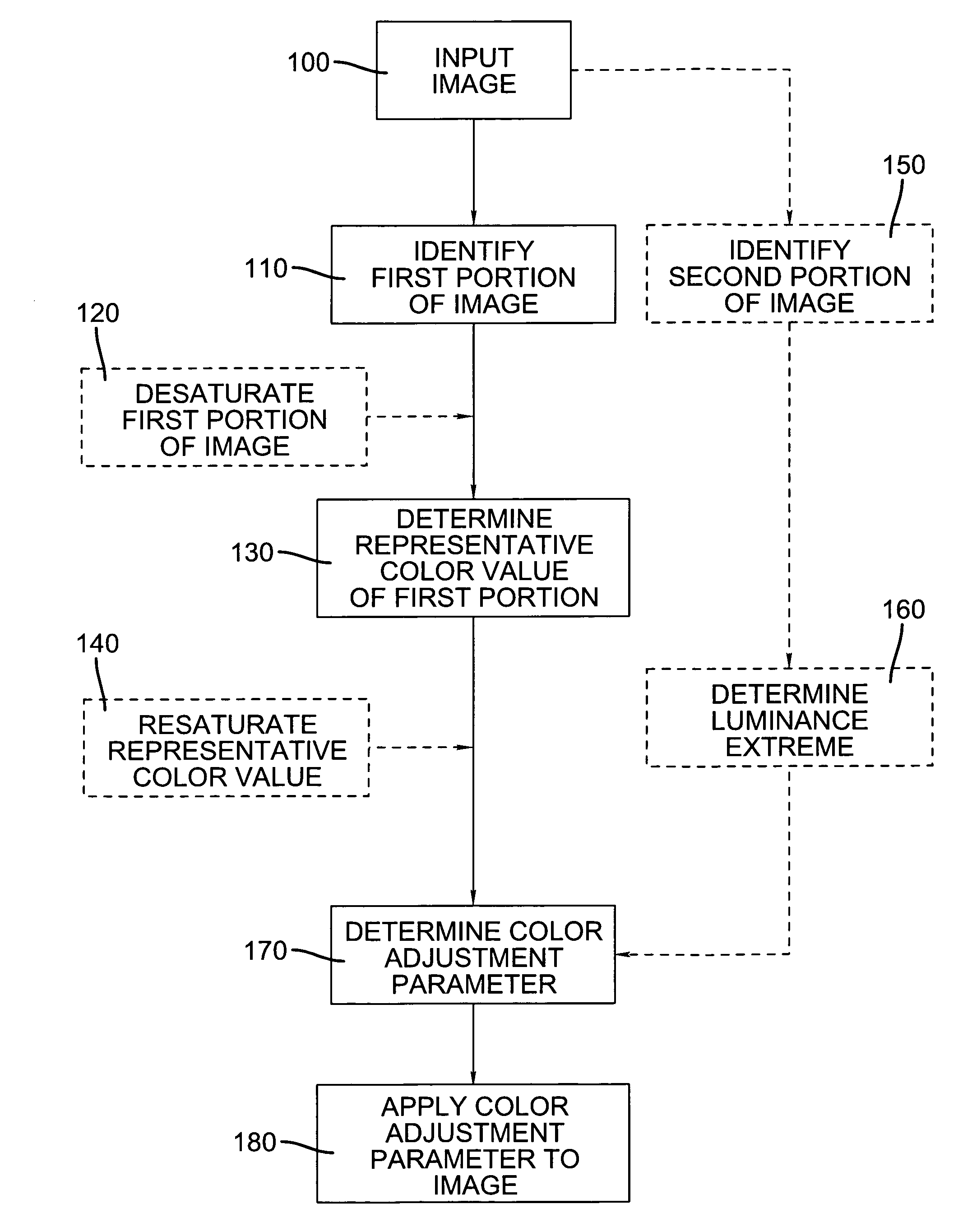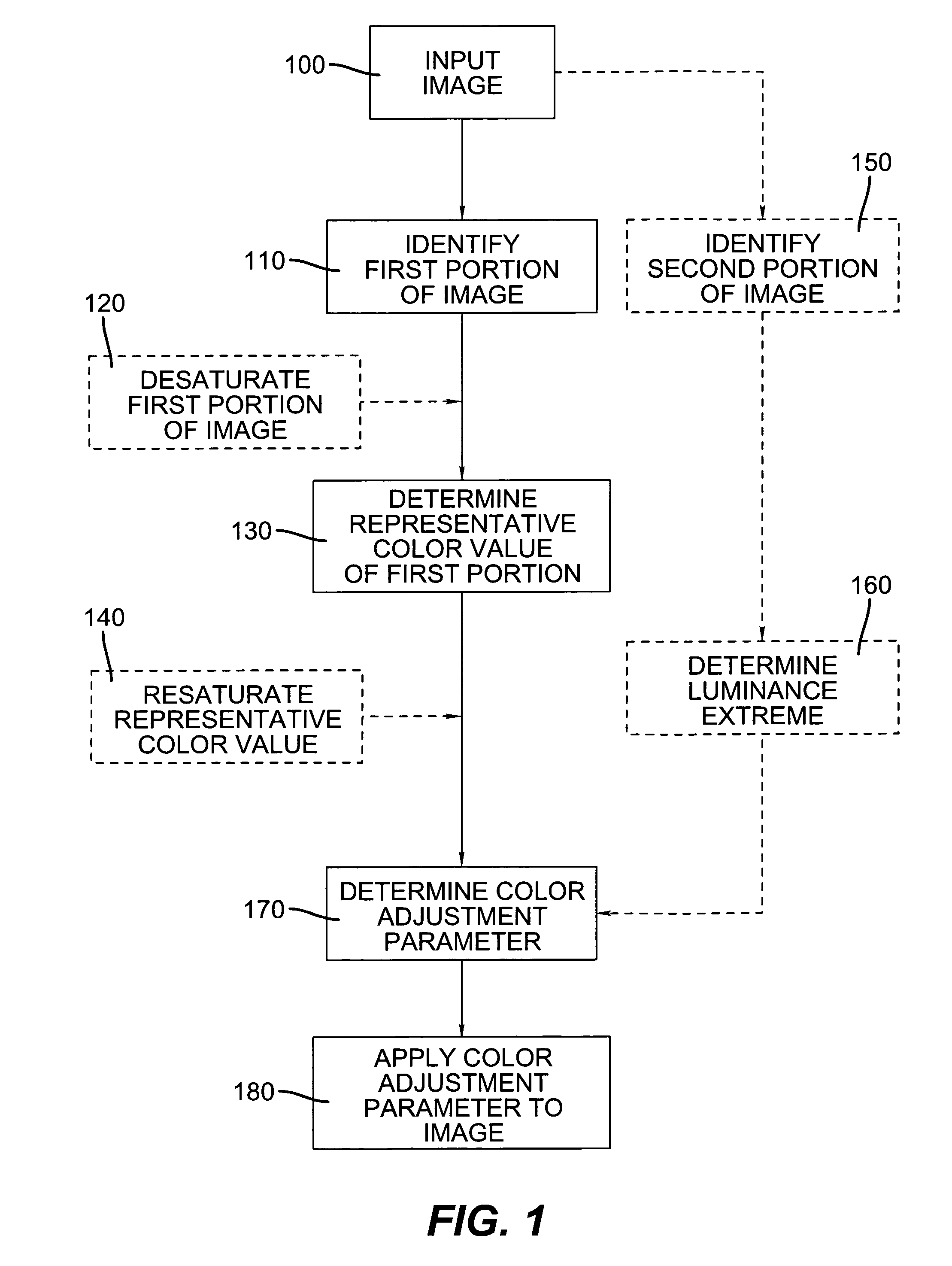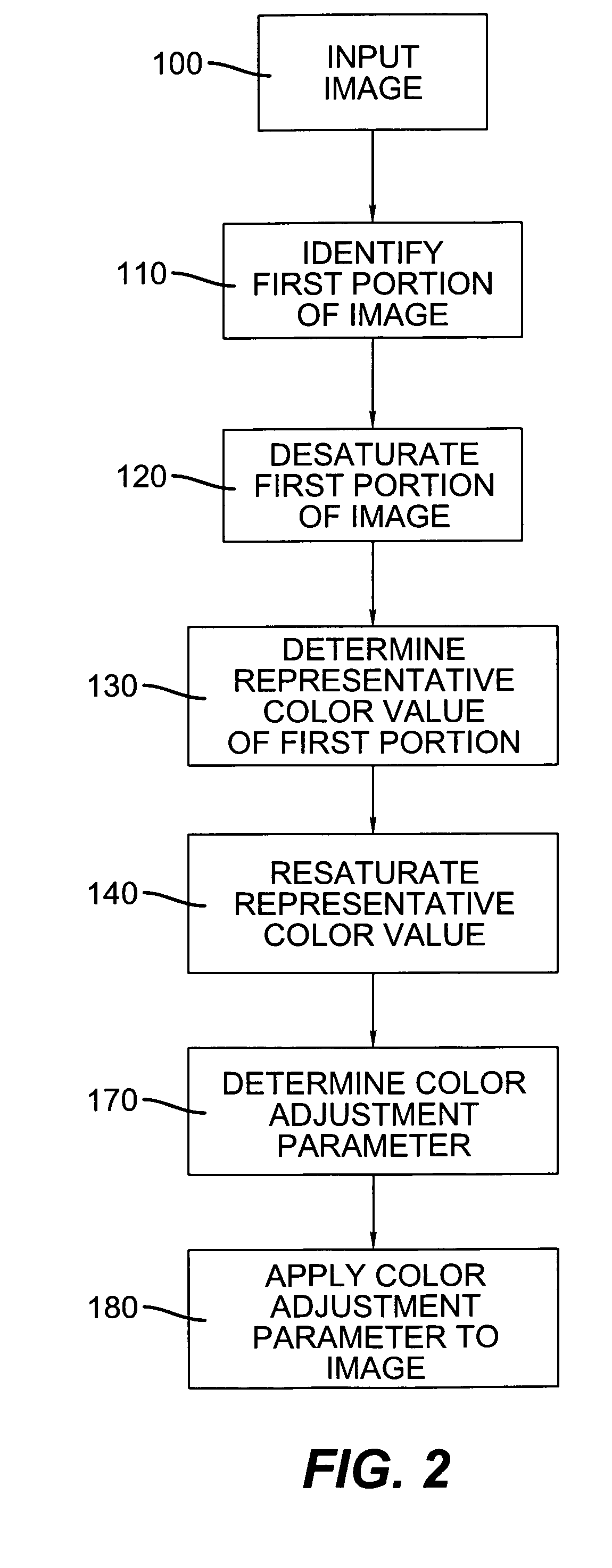Color correction method
a color correction and color correction technology, applied in the field of digital photo image processing and printing, can solve the problems of many images, subject to color discrepancies or variances, under- or over-exposing, etc., and achieve the effect of poor color balance and poor color balan
- Summary
- Abstract
- Description
- Claims
- Application Information
AI Technical Summary
Benefits of technology
Problems solved by technology
Method used
Image
Examples
examples
1. Adjustment of Photographic Identification Image
[0080]A photographic ID image is adjusted in RGB color space as follows, where the maximum color value is achieved on the subject's shirt:
[0081]
INITIAL:RedGreenBlueBackground232228221Subject's Shirt:242117134
Using the above values, to scale the background to white (255,255,255), irrespective of the remainder of the image, requires a color adjustment parameter of 1.099 for the red channel. However, using this color adjustment parameter would result in the maximum color value among the three channels of the subject's shirt, the red color value, having an adjusted color value of 265, indicating this color value would be clipped to 255. To ensure the color value of the shirt is not clipped, the color adjustment parameter is reduced to 1.054, providing the following final values:
[0082]
ADJUSTED:RedGreenBlueBackground245240233Subject's Shirt:255123141
This makes the background more white, while maintaining the color value of the subject's sh...
PUM
 Login to View More
Login to View More Abstract
Description
Claims
Application Information
 Login to View More
Login to View More - R&D
- Intellectual Property
- Life Sciences
- Materials
- Tech Scout
- Unparalleled Data Quality
- Higher Quality Content
- 60% Fewer Hallucinations
Browse by: Latest US Patents, China's latest patents, Technical Efficacy Thesaurus, Application Domain, Technology Topic, Popular Technical Reports.
© 2025 PatSnap. All rights reserved.Legal|Privacy policy|Modern Slavery Act Transparency Statement|Sitemap|About US| Contact US: help@patsnap.com



